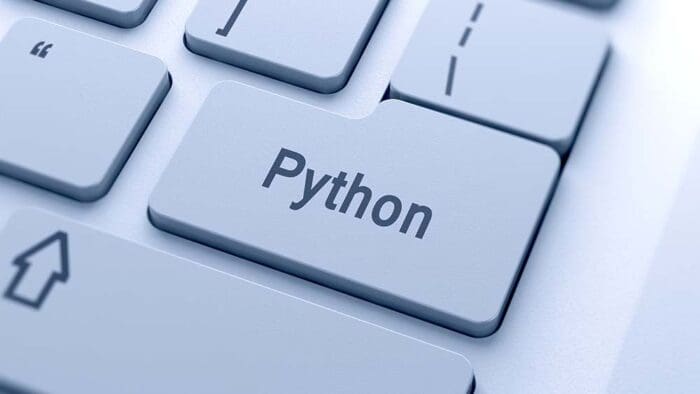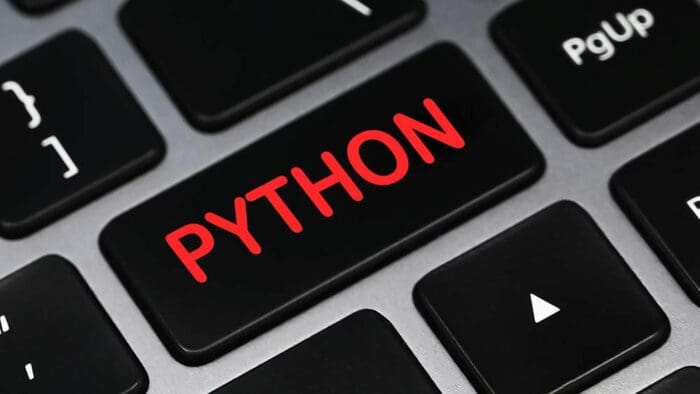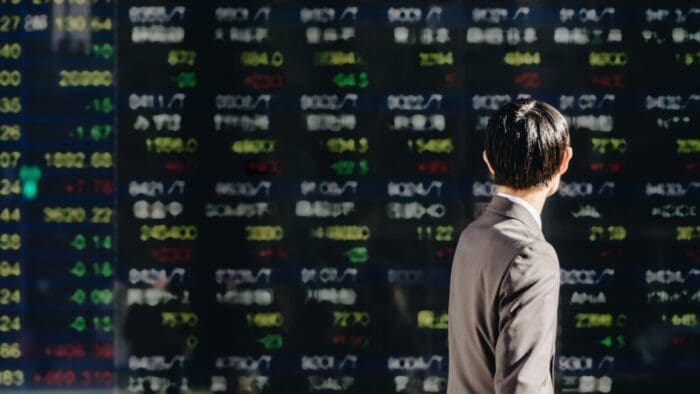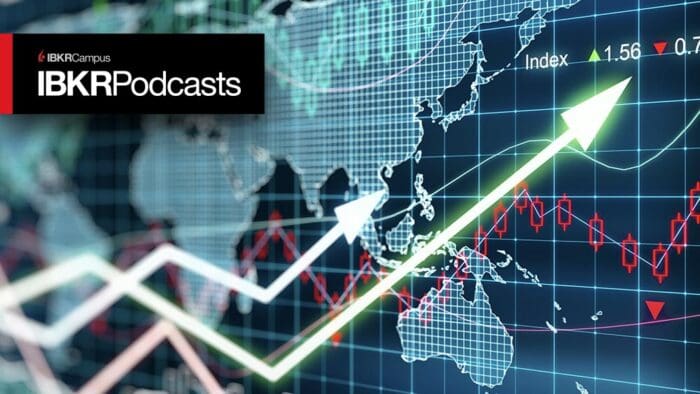Interactive Brokers’ chief strategist, Steve Sosnick, and senior economist, Jose Torres, sit down with Andrew Wilkinson, director of education, to discuss how last week’s employment report and recent geopolitical event affect equity and fixed income markets.
Summary – IBKR Podcasts Ep. 107
The following is a summary of a live audio recording and may contain errors in spelling or grammar. Although IBKR has edited for clarity no material changes have been made.
Andrew Wilkinson
Welcome to this week’s Economic Podcast from Interactive Brokers. Joining me to discuss US economics this week. Steve Sosnick, welcome, Steve.
Steve Sosnick
Hello Andrew
Andrew Wilkinson
Steve is Interactive Brokers, chief strategist and welcome, Jose Torres.
Jose Torres
Hi, Andrew, great to be here.
Andrew Wilkinson
And Jose is down in West Palm Beach and is our senior economist. So, let’s jump straight into the jobs report, not only was the September jobs report twice as strong as expected, but the previously released data was revised upwards. Jose, your take: Jobs market, good or bad?
Jose Torres
I think it’s a mixed bag. We’ve had a strong headline reading and we saw leisure and hospitality lead with big job gains. However, the report did have a non-cyclical tilt because once again government, education and healthcare [sectors] made-up almost half of total job gains, which means that the other cyclical areas like construction, manufacturing, retail, etc. didn’t add jobs at that fast of a rate. Now, in terms of what I think investors were focused on were implications from the report that may support a more dovish Fed. So, we saw wage pressures stay at 0.2%, which is fairly consistent with 2% inflation. We saw 90,000 people come into the labor force. And that was a strong development as well, because we need those supply factors to help support the downward trajectory of inflation. The Fed’s monetary policy is starting to slow the economy. We’re seeing that as folks enter the labor force, the effects of higher interest rates, loftier prices and the reduced credit availability, is making folks go out there and acquire employment, and that’s a good development for inflation. It leads to employers not having to pay a ton of money for every prospective employee.
Andrew Wilkinson
So, Steve, you’ve got some explaining to do, at least on behalf of the stock market; stocks saw red as a result of a big jobs gain, but then finally turned green. What was happening there?
Steve Sosnick
Well, there’s a bit to unpack. Friday was an interesting day. You know, the first reaction was, “Ohh my, you know that number is enormous”. It blew away every economist’s expectation, [it] blew away consensus, and it blew away the highest estimates, and there were positive revisions. So, that was a lot for the market to swallow. But then you start to look through it and you know, Jose mentioned the other parts that were not as negative, you know, not as unfriendly let’s call it for bonds or for Fed policy, and possibly somewhat friendly, and somewhat friendly is probably good enough for this equity market here. Bonds sold off very sharply as a result, and then started to rally. But there were two factors in there that I think were somewhat, I hate to say seasonality, but very esoteric. Number one: You have a holiday in the bond market today as we’re taping (Monday). So, I do think there was a certain amount of position covering after that initial downdraft. I think you started to see some shorts get covered ahead of the long weekend and that provided a little bit of a lift to the bond market. Once the bonds started to stabilize, so did stocks. On top of it, remember, every Friday is 0DTE day for weekly options, and I know we focused a lot on 0-dated options and their effect. But the phenomenon of this gamma-related move on Friday afternoons has been around since early 2021. I looked back and saw when I started writing about it, that was at least the first time I could find that I wrote about it. So, both of those combined, once you know, you sort of lit the candle, off we went. And I think that those two factors led to the rally. Also remember, some comments that we that we’ve gotten to some oversold extremes earlier in the week, the put-call ratio had jumped higher. So, the stage was set for a rally, although this one you could argue got a little kooky at the end.
Andrew Wilkinson
Let’s stick with the bond market. The yield on the 10-year Treasury flew to the highest since about 2007. We’re right up there around 4.80%, I think on Friday afternoon or Friday morning in response to the jobs report. Jose, let me ask you, the bond vigilantes; are they’re back?
Jose Torres
I think so, Andrew. And what’s going on in the marketplace these days is that everyone is hoping that the Fed starts cutting ASAP. But the issue is that if the Fed starts cutting, and you’re not at the 2% inflation target yet, then market players are going to drive the long end part of yield curve higher. And that’s what we’re seeing, and the long end is experiencing significant headwinds these days of historical magnitude. When you look at the level of issuance, the budget deficits that we’ve been running, persistent inflation, geopolitics, the Fed, the unwinding of its balance sheet, which is a huge headwind every week when we see $20 to $40 billion come off their balance sheet. That’s $20 or $40 billion that needs to be absorbed by the private markets, right. Banks, regionals and big banks alike aren’t buying as much anymore. You know, they’re a little concerned about commercial real estate and consumer loans, which I think can be problematic as well. So, the treasuries are catching a bid but from more price sensitive buyers, like individuals and hedge funds. You know, the Fed, when they were buying bonds, they weren’t price sensitive. They were buying bonds at any price. So, I think those are some of the developments that we’re seeing. Also, to add a little bit of color on what Steve was saying earlier on oversold conditions in the equity market, we saw the bears really try to attack the 4200 level on the S&P500 [index] and the 20 level on the VIX. We saw that several times and that proved to be unsuccessful. And I think that also supported conditions for a bounce particularly on a Friday where you know sometimes I envision a lot of folks in a chat room saying, “OK, now’s the time to buy calls”, you know back at meme mania, [but] ot as extreme as back then. But I do envision some of that stuff going on when we just see this ferocious dip buying. And you know, it’s the middle of the day, and it just went green. And then by 1:00 or 2:00, now we’re really green. And it was just two hours ago we were really red. So, these are mind boggling reversals.
Steve Sosnick
But the tell on days like that is you see a lot of activity coming in, whatever the next strike is above the market, whether we’re looking at ETFs or individual stocks. Then, if enough buying comes in, it pushes it toward that level and those who are making money, rather than just simply taking the profits and rolling them up to the next strike and rinse, repeat, and on a day like that where you know you get to do that several times. So, I think that’s how they take on a life of their own. Although it was interesting that we didn’t continue right into the close, it was a little bit of profit taking, so not even everybody was convinced that this was the be all end all, just as I mentioned, there was short covering in bonds. I think there was some profit taking in stocks that you know, not everybody wanted to go home long over the weekend.
Andrew Wilkinson
Steve, just to wrap up bonds there, what is the impact in terms of higher-for-longer, how does it change the landscape do you think?
Steve Sosnick
Well, let me first say that higher-for-longer really should be replaced with high-for-longer. It’s not clear to me that we’re going to be higher at least in terms of the short end. It’s not a done deal that we’re going to be seeing a rate hike between now and the end of the year. It’s not out of the question, but realistically, no one’s really expecting much beyond that, especially with some improving labor dynamics that Jose referred to earlier. High-for-longer, sure. And let’s put things in perspective on a long-term historical basis, we’re about normal now. This isn’t high. It’s high relative to the post global financial crisis era where we got used to a decade-plus of relatively zero rates. You know, getting some interest on your savings is historically normal, as people normally demand some sort of return on investment on their risk free investments. The problem we run into is, and and we could have a whole two-hour podcast on this, the thing to keep in mind in the dislocations that come is very low rates favor borrowers, higher rates favor savers. And I think as we, over 15 years, were already a nation of borrowers and we really became a nation of borrowers, and now favors savers. That’s a good little rhyme there, I wasn’t intending. But the environment that favors savers is a bit of a different place for us to be. And so yes, it’s hot it. It’s high-ish. It’s high now relative to where we were, but I would say instead we’re more normalized historically than being too high now.
Jose Torres
I agree, Steve, and one dynamic that’s been changing significantly over the last 10 to 15 years is you can’t just, in this era, refinance and solve all your problems like that. You know we’re seeing that in the real estate sector where a lot of folks now are stuck with underperforming properties and the financing options in the last 15 years just aren’t there. And it really changes human behavior, you know, to the extent that I believe that we’re going to be high for longer it’s going to, instead of incentivizing borrowing and over leverage, we’re encouraging, saving and planning. So, I think there’s going to be some other shifts as we move forward as well.
Steve Sosnick
Yeah, that’s what I mean. We could, we could probably do an hour-long podcast and still not resolve it.
Andrew Wilkinson
Now, I want to look back to something, Jose said earlier. He used the word geopolitics. Steve, looking beyond US macro, what impact is this unfortunate situation in the Middle East likely to have on both oil [prices] and safe-haven assets?
Steve Sosnick
In theory this should be a risk-off type of day, type of event. The one thing I always remind myself and other people of is, US equity traders are particularly bad at discounting geopolitical events. They/ we are very good at pricing in things that hit the bottom line of individual stocks; you know, what is this going to do for sales earnings, cash flows? The things that allow us to do equity pricing in a normalized sense. When there’s so much uncertainty, equity traders tend to get it wrong. They tend to take their cues from other markets in some cases. And you know you did have a bit of a leap in oil prices. But remember the moves we’ve had in oil over the past week and a half. We were flirting with relatively medium-term highs and then, sort of collapsed last week, and at least as we’re taping this, some of that’s come back, and I would say that commodity traders are very good at supply demand dynamics going forward. We’re not getting any clues or sufficient clues today (Monday) from the fixed income markets because they’re closed. So, I think equities are sort of left adrift, which is why you’ve sort of had a little bit of a sell off. It’s not clear to me that we wouldn’t have had a little bit of a sell off anyway after the move we had on Friday. Equity traders know this isn’t good. Anyone with a conscience or soul knows that this is not a good scenario right now for anyone. But as far pricing stocks, it’s certainly not good news, but it is how much of a headwind it is. Here’s the basic question, does this really disrupt the market’s mindset over the Magnificent Seven stocks in the long term? I don’t know.
Andrew Wilkinson
Jose, any interjection at the end there.
Jose Torres
To the extent that geopolitical event leads to a lighter Fed through an indirect way, then maybe that could support the Magnificent Seven to an extent. But with the 10-year [yield] at these levels and the Fed continuing to unwind its balance sheet, it appears to me that equity valuations are particularly stretched and Steve, you write in a lot of your commentaries, you know that can remain that way for a long time.
Steve Sosnick
Tune into the podcast that Cassidy Clement and I did regarding market jargon, where you get into how markets, can remain irrational longer than you can remain solvent. Sorry, I just had a shameless plug there for another IBKR campus property!
Jose Torres
You know, Steve, I was literally about to mention that same exact quote.
Steve Sosnick
Well, you teed it up perfectly.
Jose Torres
But yeah, I mean overall, you know, geopolitical events, there’s a lot of wild cards out there. We don’t know where the big players are going to align. There are reports saying that Iran is involved. We don’t know Moscow, Beijing, Riyadh, what positions they’re going to take. So, there’s a lot of uncertainty out there. I’m still on recession watch. I think the two catalysts that I’m mainly watching are the banking sector and how they handle this significant rise in yields alongside trouble in commercial real estate asset valuations across office, apartment buildings and retail, and then also consumer loans. We’re seeing some auto loan delinquencies, credit card delinquencies rise and then on the other side, I’m expecting the possibility that consumer demand really falls off a cliff into year-end. So, those are the two factors I’m watching for possible recession next year.
Steve Sosnick
And I thought I had a sober view of things. Thanks, Jose.
Andrew Wilkinson
Thank you, gentlemen, thank you very much. We’re going to have to leave it there. Don’t forget, folks, listen to IBKRPodcasts for all other episodes. And Steve mentioned the Cents of Security podcast channel for all of your financial literacy education. And you can catch more from Jose at tradersacademy.com and look up the economics lessons. Guys, thank you very much for joining me today.
Steve Sosnick
Thanks Andrew. Thanks Jose.
Jose Torres
Great pleasure. Thanks Steve. Thanks, Andrew.
Disclosure: Interactive Brokers
The analysis in this material is provided for information only and is not and should not be construed as an offer to sell or the solicitation of an offer to buy any security. To the extent that this material discusses general market activity, industry or sector trends or other broad-based economic or political conditions, it should not be construed as research or investment advice. To the extent that it includes references to specific securities, commodities, currencies, or other instruments, those references do not constitute a recommendation by IBKR to buy, sell or hold such investments. This material does not and is not intended to take into account the particular financial conditions, investment objectives or requirements of individual customers. Before acting on this material, you should consider whether it is suitable for your particular circumstances and, as necessary, seek professional advice.
The views and opinions expressed herein are those of the author and do not necessarily reflect the views of Interactive Brokers, its affiliates, or its employees.
Disclosure: ETFs
Any discussion or mention of an ETF is not to be construed as recommendation, promotion or solicitation. All investors should review and consider associated investment risks, charges and expenses of the investment company or fund prior to investing. Before acting on this material, you should consider whether it is suitable for your particular circumstances and, as necessary, seek professional advice.
Disclosure: Options Trading
Options involve risk and are not suitable for all investors. For information on the uses and risks of options, you can obtain a copy of the Options Clearing Corporation risk disclosure document titled Characteristics and Risks of Standardized Options by going to the following link ibkr.com/occ. Multiple leg strategies, including spreads, will incur multiple transaction costs.














Join The Conversation
For specific platform feedback and suggestions, please submit it directly to our team using these instructions.
If you have an account-specific question or concern, please reach out to Client Services.
We encourage you to look through our FAQs before posting. Your question may already be covered!